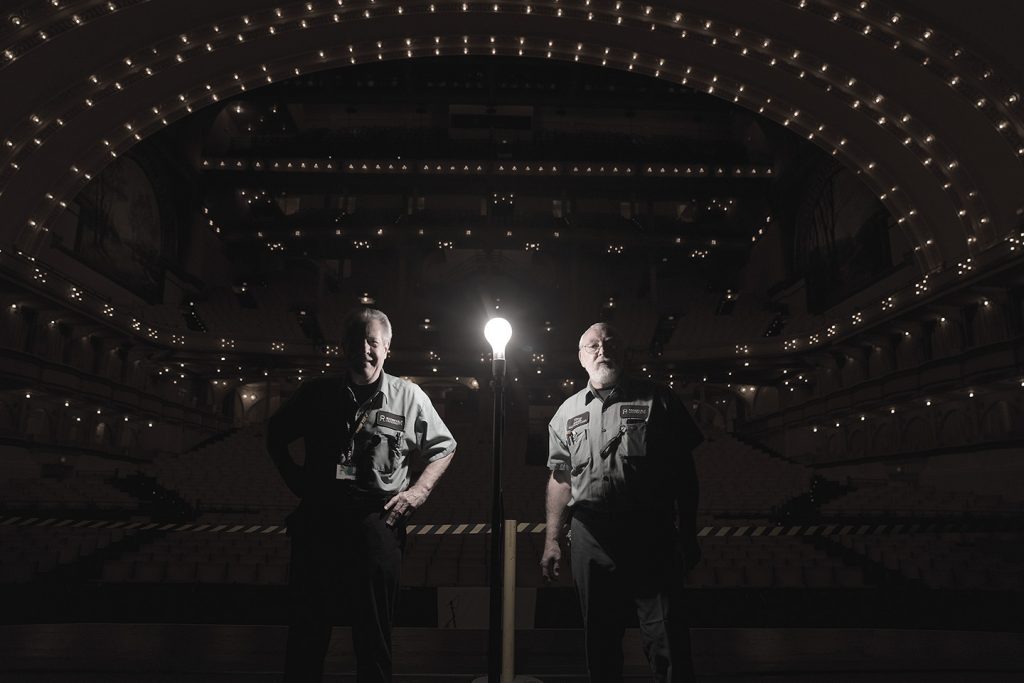
In a humid and oppressive August evening in Chicago, some 20 tourists from around the world gathered around tour guide Andy for his weekly “ghost walk” around the South Loop. At the Congress Hotel –considered one of the most haunted places in the city — we learn about Karel Langer, a young boy tossed out of a 12th floor hotel window in 1939, whose ghost is legendary. And we were told about Shadow Man, who killed himself the night before his wedding in 1900, and reportedly still occasionally roams the lobby, where the piano sometimes . . . plays by itself.
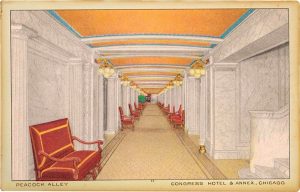
But what about the Auditorium Building and Theatre, just across the street? The ghost tour speculates about a “presence” felt near Peacock Alley, the underground marble tunnel linking the Congress and Auditorium hotels at the turn of the century that was walled up in 1911. Is the Auditorium Building, opened in 1889 as a stately hotel and world famous Theatre and now home to Roosevelt University, haunted?
To find out, we asked staff members who work the night shift and Roosevelt alumni.
The Auditorium Theatre
The Theatre is a magnificent space with 4,200 seats, four balconies, a deep stage and an ornate lobby. The after-hours lighting is dim and the space cavernous and full of shadows and dark corners.
Nick Ahrens, an engineer whose job includes checking the fire safety mechanisms at night, reports experiencing numerous episodes of a “presence” in the Theatre. These include muffled conversations and laughter, mysterious footsteps and doors banging shut when no one is there.
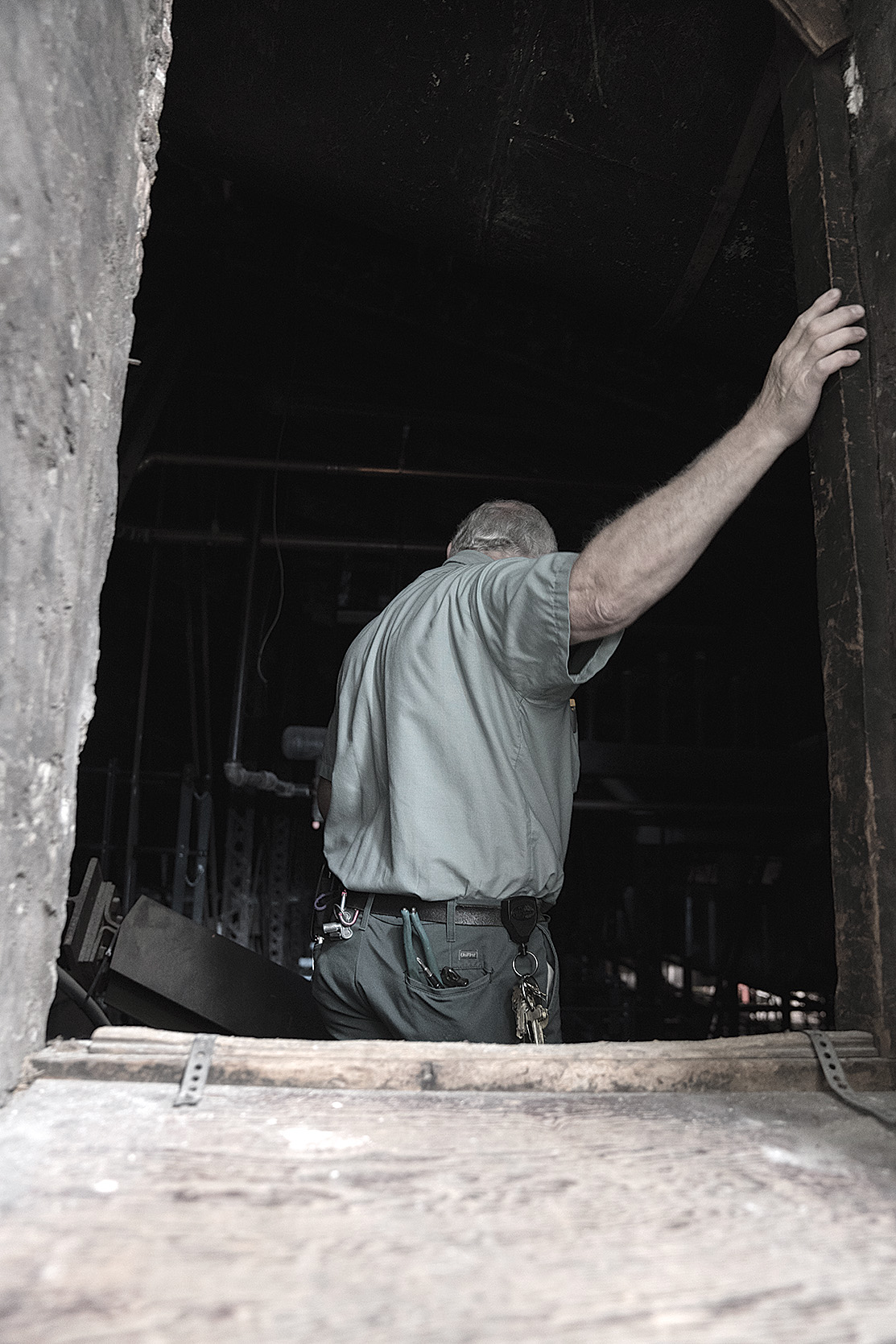
One time, at 2 a.m., he entered the stage and looked out into the seats, admiring the architecture. To his surprise he saw a man sitting toward the back of the Theatre. He squinted, called out “What are you doing here?” and approached the spectral figure. “But he was gone by the time I got close,” Ahrens said. “He was there and then he wasn’t. When I told my colleagues about the experience some admitted they had also seen people in the audience seats who quickly vanished.”
“Thousands of people have passed through these halls over the years. Our ghosts aren’t threatening or menacing, just odd. They no longer bother me. I just think – there they are again!”
Nick Ahrens, Roosevelt Building Engineer
When Ahrens began his job in 2003, there was an engineer who said he had seen strange things and refused to enter the Theatre alone at night. He asked to be reassigned to another shift. But the ghostly experiences don’t bother Ahrens. “It’s obvious there is something there,” he said. “Thousands of people have passed through these halls over the years. Our ghosts aren’t threatening or menacing, just odd. They no longer bother me. I just think – there they are again!”
The Theatre has also startled campus safety officer Clara Christmas, who reported that while working the midnight shift some 10 years ago, “I thought I heard voices in the Theatre – as if there were a performance at two in the morning.” But the stage was empty and after that time “I changed my mind about visiting certain places at night!” she said.
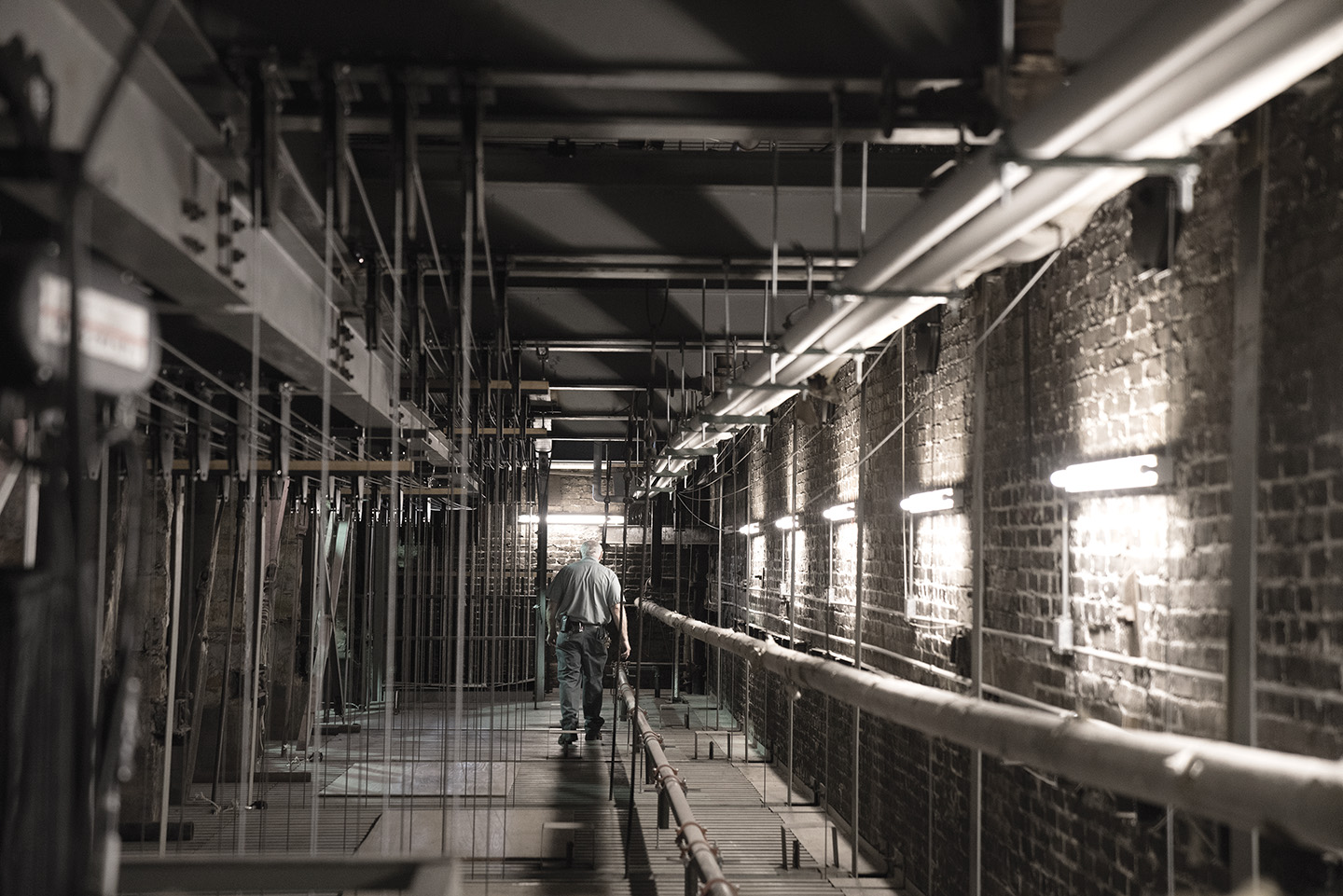
Stephen Sell, director of production and facilities at the Theatre, said that several people have reported seeing a ghostly man on “the jump,” a catwalk 40 feet above the stage. A TV crew visited about five years ago and claimed to see a male ghost in the lobby and another entity with a scarf on the catwalk. “At two in the morning my step quickens,” he said, “but I personally have never seen or heard or felt anything.”
But some former students recall noticing a presence in the Theatre. One remembered sneaking into the fourth balcony at night with some friends and suddenly confronting a man in Victorian clothing who shook his finger at them. The students scrambled rapidly out of the balcony but on looking back over their shoulders saw . . . nothing.
Larry Powitz (BA, ’66; MA, ’72) remembers hearing stories of an otherworldly presence in the Theatre. “We would sneak in there at night after our late classes . . . The stillness and quiet were foreboding. I recall vividly the time that a just audible rubbing sound was heard. The bravest of the three of us boldly went to investigate. Nothing. The place was creepy.”
Dulcie Gilmore, a former executive director of the Theatre, wrote, “Anyone who has sat, alone, in the ghost light of the Auditorium Theatre knows it has a strong persona. Once the crowds have left and the actors have retired for the evening, the Theatre itself invites those from the past to come from the shadows.” In particular she reported sightings of spectral Native Americans on the stage one October night in 1987:
One lady (on a tour) asked what production was in rehearsal. I thought it an odd question, as the stage was bare. . . she, along with several other guests, asked why the person in Native American costume was on the stage. Many of them saw him cross from stage left to stage right. The chief was wearing a war bonnet headdress. . . I had seen him too, on another occasion. . . . We learned that the Auditorium Building was built on the site of a battle at which a young Indian chief and his princess were killed.”
Gilmore reported that a “cleanser” was hired to speak to the spirits and encourage them to leave. No sightings of Native American ghosts have been reported since.
The Auditorium Building
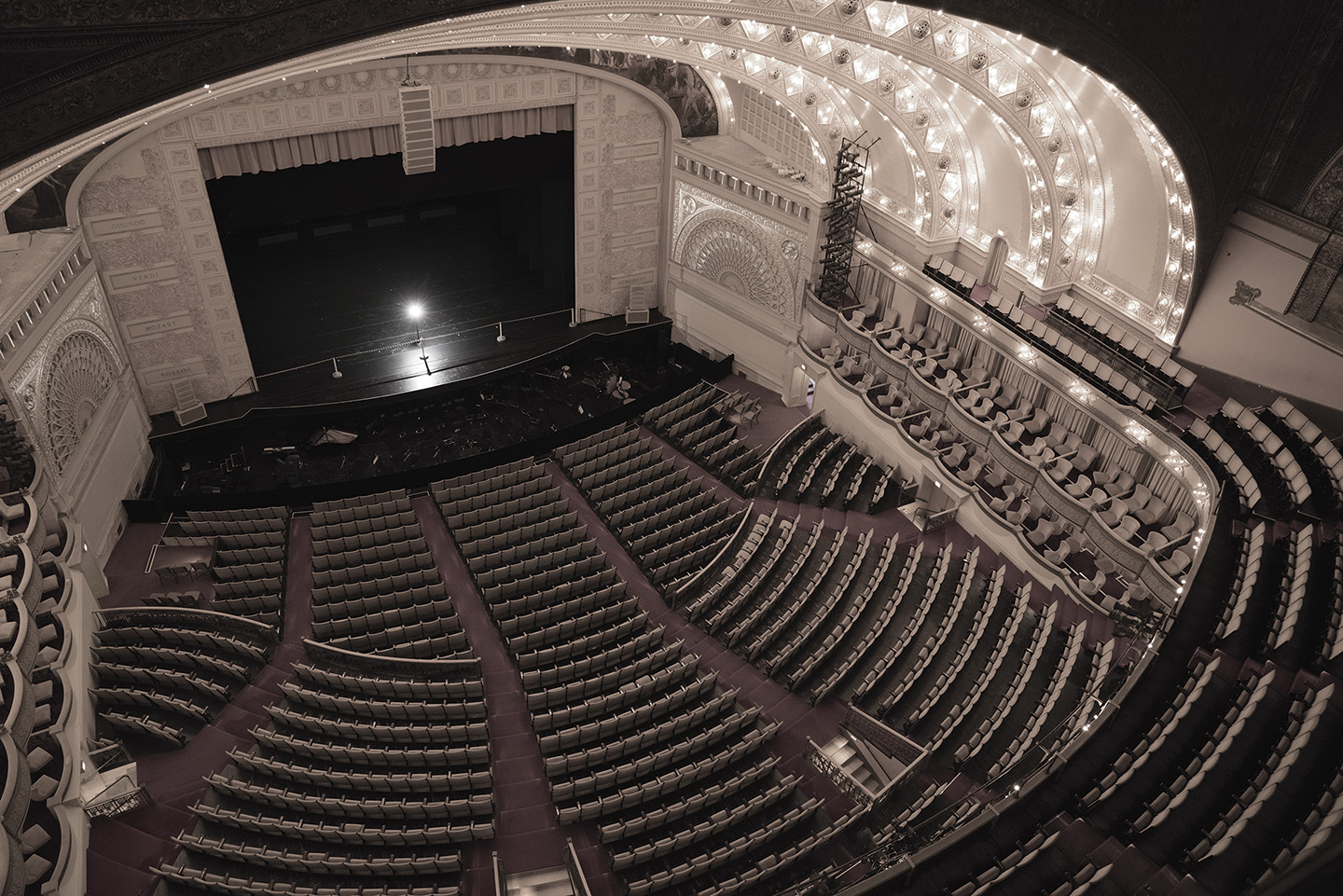
The Auditorium Building was once home to 400 hotel rooms, business office suites, large reception halls and a tower that rises 10 floors above the building and contains a maze of stairwells, narrow corridors and small offices. Full of students, faculty and staff during the day, late at night the Auditorium Building is silent, dark and lonely.
The architects and designers of the building, Dankmar Adler, Louis Sullivan and their apprentice Frank Lloyd Wright, occupied offices on the 17th floor of the tower. Alumna Caitlin Spratt recalled students who would wander around the building at night sometimes heard faint conversations in and near the tower. “Legend has it that if you walked by the elevator entrance to the tower, or inside the tower itself, the noises people heard were actually the arguing and fighting of Adler and Sullivan,” she said.
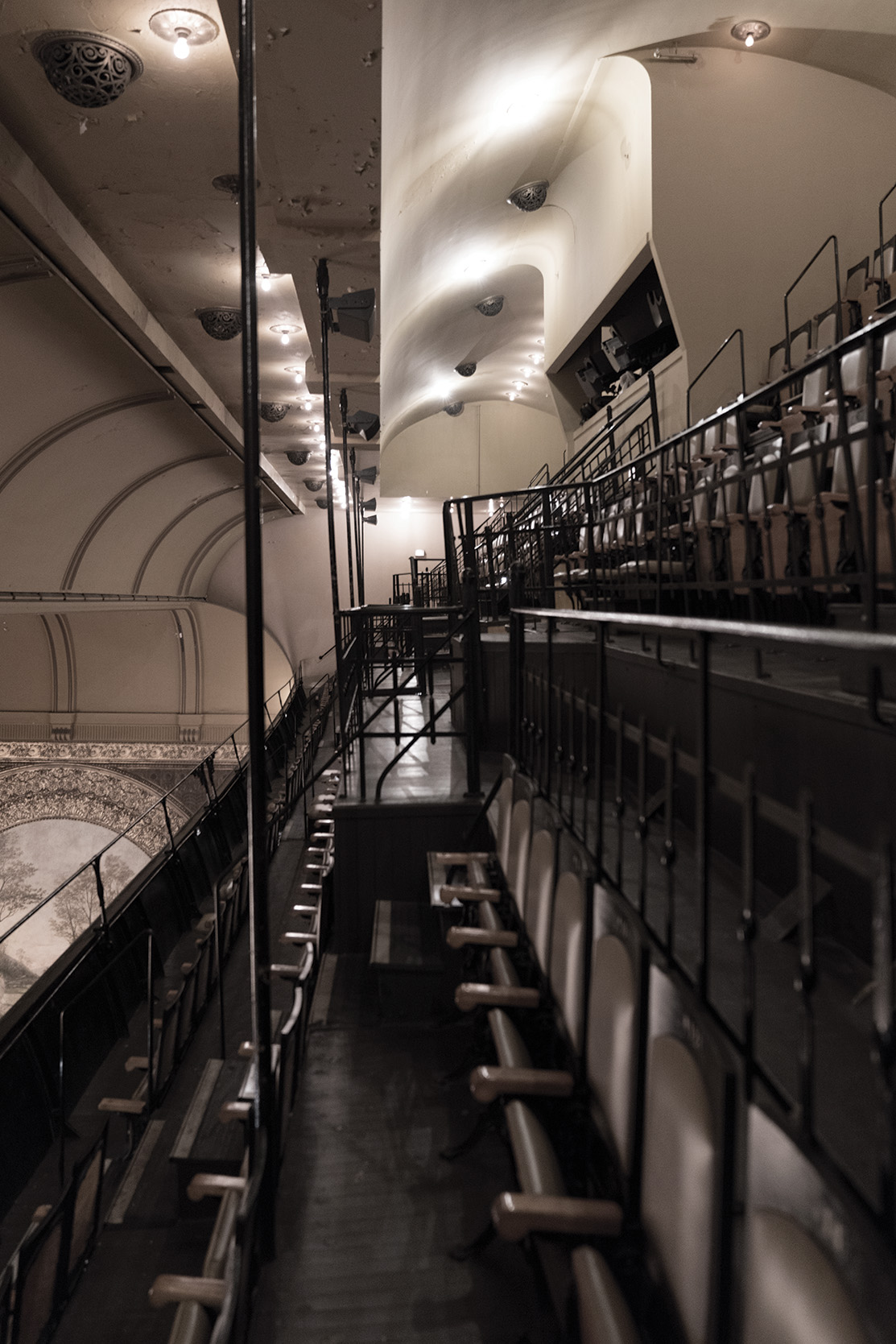
Another ghoulish story also involves the tower. Bill Moor, who studied at Roosevelt and taught philosophy from 1968 to 1972, recalled that the tower housed Andrew Ivy, a renegade (and later discredited) researcher and biochemistry professor from 1961 to 1966 who claimed that he could cure cancer. “I saw an array of skeletonous old men coming and going to the tower,” Moor said, “ . . . a parade of doomed hopefuls.”
The Congress Lounge and other spaces on the second floor of the Auditorium Building also reportedly are the site of ghostly presences. Engineer Tony Bugajsky said that while doing night rounds on the Congress corridor of the second floor he has heard muffled conversations and twice has felt something touch his finger. “I took my flashlight and saw nothing,” he said. He has heard loud running steps behind him on the south side corridor of the eighth floor, lockers slamming in the basement office at five in the morning when no one else was in the room and banging noises on the south side of the sixth floor.
The Academic Success Center is housed just to the south of the Michigan Avenue lobby. Assistant Director Danielle Smith reported that she was alone in the office early one morning when she put her water bottle on a sink, suddenly felt very cold, and “Bang! My water bottle flew off the sink and into the wall, I was shaken up for hours!” She also said a student told her the story of working in the 10th floor library late at night and suddenly he saw a maid start to clean the tables. The thing was – the maid was wearing “an old timey outfit” and missing her legs.
“Legend has it that if you walked by the elevator entrance to the tower, or inside the tower itself, the noises people heard were actually the arguing and fighting of (Dankmar) Adler and (Louis) Sullivan.”
Caitlin Spratt (BA, ’15)
There is one room in the Auditorium Building with an especially eerie history. Generations of students have heard about the eccentric and world-renowned actress Sarah Bernhardt, who performed on the Auditorium stage from the 1890s to the early 20th century. She always stayed in Room 720 and slept in a coffin.
This story is probably true as Bernhardt, in fact, had a coffin built for travel so she could sleep in it while on tour and “better understand her tragic roles.” The coffin was lined with white satin and replete with flowers and letters from her many lovers. She also traveled with her huge Saint Bernard dog and two maids. The history and philosophy students who now use this room for seminars haven’t reported any canine or human ghostly presence during their classes . . . yet.
The ninth floor – originally the home of the Chicago Musical College and now housing the Chicago College of Performing Arts – seems to be another popular site for spectral occurrences.
“I saw an array of skeletonous old men coming and going to the Tower. . . a parade of doomed hopefuls.”
Bill Moor, Former Roosevelt student and faculty member
Joseph Extejt, a 1983 graduate, recounted the story of a young woman practicing violin in the studio of Robert Long in the late 1970s. Suddenly she saw a man in an opera costume and when she asked him, “What are you doing here?” he disappeared. “She packed up her violin with utmost expediency,” Extejt said, adding that “she passed out right there in the hallway.”
And there’s more about the ninth floor. Staff members reported hearing running footsteps in the middle of the night, objects moved in room 902 and a mysterious banging in room 908 that could not be explained by the engineers. Campus Safety Officer Clara Christmas also has heard strange noises on the ninth floor and has seen shapes “out of the corner of my eyes – I’ve seen something faintly there then not there, and thought – ‘time to go!’”
So – is the Auditorium Building haunted?
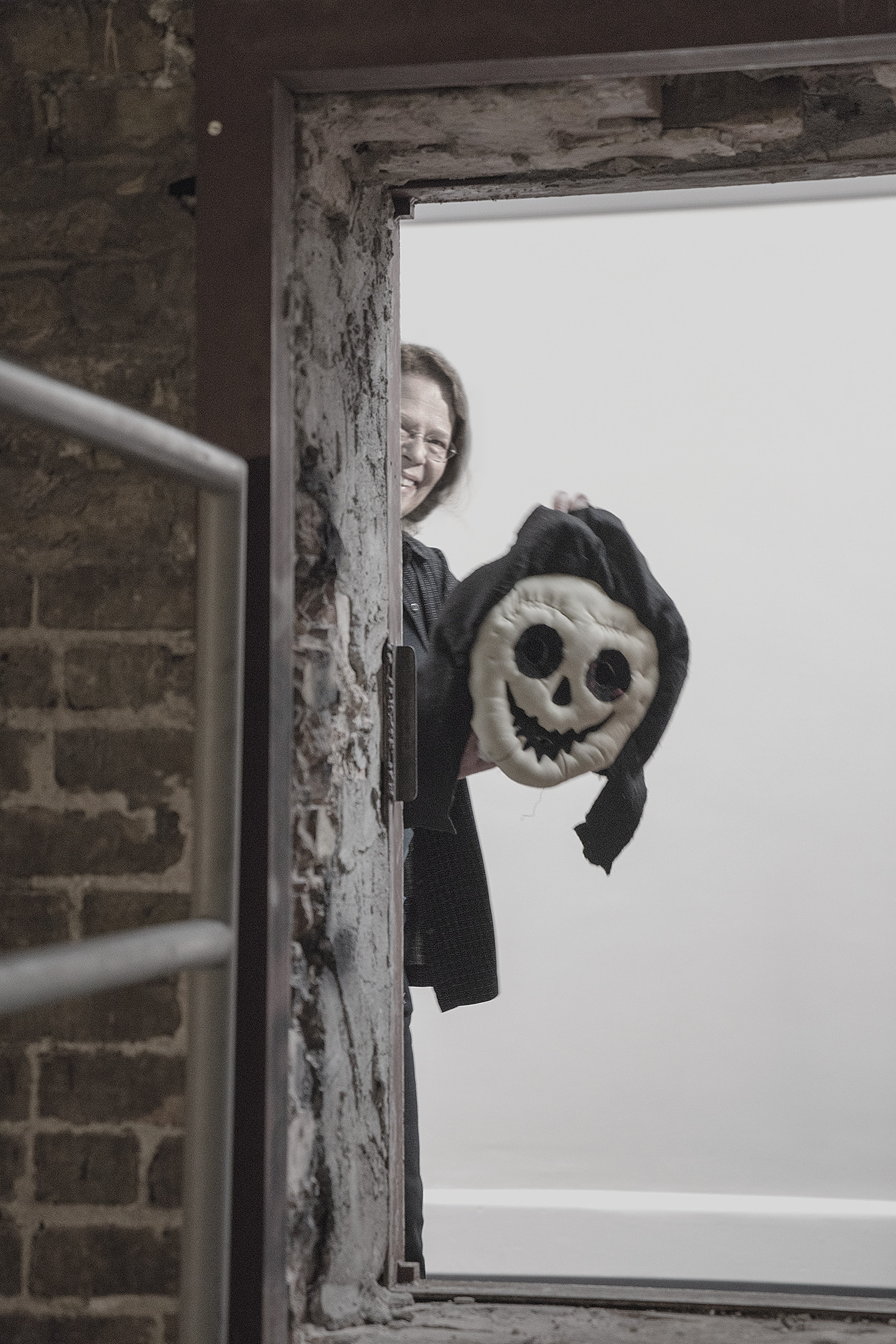
Professor of Psychology Jonathan Smith, author of Critical Thinking: Pseudoscience and the Paranormal, forthcoming in January 2017, has taught at Roosevelt since 1975 and regularly offers a popular course on the paranormal. When asked about the ghost stories of the Auditorium Building and Theatre, Smith said the human brain is wired to “create a sense of ‘presence’ and the uncanny.”
The awareness of an ill-defined presence has a firm neurological basis, especially in low stimulation conditions that are dark and silent, he said. “Ancient humans who had this ability to sense something unseen were alert to very real dangers, such as predators or environmental threats, so there is an evolutionary basis as those who had a sense of presence were more likely to survive.”
“The power of the mind combined with a person’s expectations can easily conjure up the presence of a ghost in a dark place. This is child’s play for the human brain.”
Jonathan Smith, Professor of Psychology
In addition, Smith stated that once a presence is sensed, an individual’s cultural expectations and past experiences can create such hallucinations as mysterious footsteps, a tap on the shoulder, dimly heard conversations, or sightings of angels, UFOs, ghosts, or otherworldly beings. There can also be a group effect where several people simultaneously experience the same hallucination.
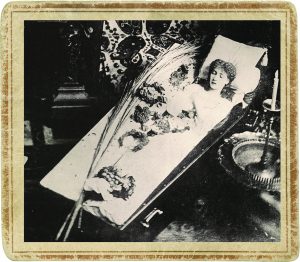
Smith said that the same brain that sees ghosts is wired to seek deeper meanings in the universe. “The paranormal,” he said, “is an incomplete notion of the larger world of wonder. The power of the mind combined with a person’s expectations can easily conjure up the presence of a ghost in a dark place. This is child’s play for the human brain.”
Author Italo Calvino wrote, “The more enlightened our houses are, the more their walls ooze ghosts.” Well, the Auditorium Building and Theatre are certainly enlightened places that exist in the larger world of wonder. Do ghosts visit our buildings at night? Just ask the night shift.

Hi there, I enjoyed this article and find it interesting. I also have a thing or two to share relating to this.
Several years back, I had worked for a temp agency that assigned me to work there. I was doing janitorial duties on weekends before, during, and after shows. At night after the show, there were places in that theater that would creep me out. Such as the upper balconies, some bathrooms, and the older dressing rooms.Those areas gave me chills.I often heard voices and saw things in the corner of my eye. When I turned to look and see……nothing.
There is definitely a presence there.
So with that said, Thank you for writing this article. I know I’m not the only one who thinks it’s haunted.